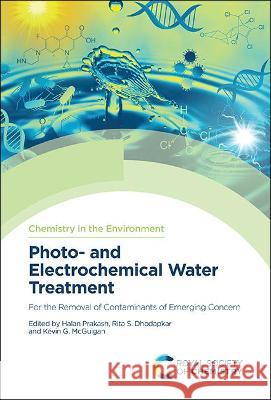Photo- And Electrochemical Water Treatment: For the Removal of Contaminants of Emerging Concern » książka
Photo- And Electrochemical Water Treatment: For the Removal of Contaminants of Emerging Concern
ISBN-13: 9781839165016 / Angielski / Twarda / 2022 / 410 str.
Globally, 2.1 billion people live without access to safe water, and about 159 million people collect their drinking water directly from surface water sources. This issue is particularly prominent in water-stressed areas, such as India, which has a rural population of around 700 million, 63 million of whom do not have access to clean water. Contaminants of Emerging Concern (CECs), of both a chemical and biological nature, are increasingly being detected in wastewater effluents around the world. Chemical CECs include pollutants such as pharmaceuticals and personal care products, pesticides, hormones, and endocrine disruptors, and biological CECs include antibiotic resistant bacteria, pathogenic protozoans, and viruses. New technologies to remove the contaminants from water are urgently needed and photochemical approaches offer an exciting array of possibilities. Covering chemical analysis, molecular biology methods and computational approaches important for the elucidation of mechanisms and evaluation of photochemical processes, this book presents advanced photochemical processes for the removal of CECs from water. Readers will find chapters on advanced photochemical treatment prototypes and pilot plants, and discussions on translation from lab to field-scale implementation. Examples include highly transparent materials, integrated membranes, adsorbents, and photocatalysts for enhancing the photochemical processes by direct sunlight induced reactions, photo-Fenton, and photo-electrochemical reactions. Discussing both the advantages and disadvantages of these technologies, this book is a great resource both for academics researching photocatalytic processes and for water treatment professionals.











